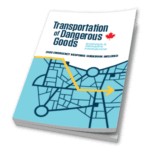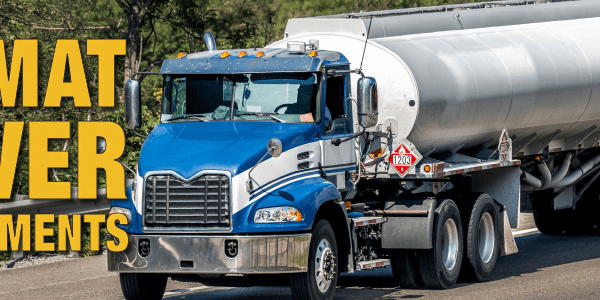Hello everyone! Have you ever been faced with a headache when it comes to preparing a container for a dangerous goods shipment?
Or where to look for learning how to pack your dangerous goods? How do we know what type of container we can use? How much is allowed?
Let’s start by listing the terms related to your containers’ packaging process as stipulated by the TDG.
In Part 1 of the TDG Regulations, Section 1.4, and Section 2 of the TDG Act, you will find the most commonly used definitions.
Such as:
- Container: packaging, container, or any part of a means of transport used or capable of being used to contain goods.
- Small container: containers with a capacity of 450 L or less
- Large container: containers with a capacity greater than 450 L
- Capacity: Which means, in terms of a container used to hold:
(a) a liquid or gas, the maximum volume of water, normally expressed in liters, that the container can hold at 15 °C and at an absolute pressure of 101.325 kPa
(b) in the case of dangerous goods other than a liquid or a gas, the maximum volume, normally expressed in cubic meters, that the means of containment can hold. - Standardized container: Any container for which regulatory safety standards apply.
- UN standard container: Container meets the requirements of Section 5.6 of Part 5
- Barrel: A container made of metal, cardboard, plastic, or other similar material with flat or convex ends and a maximum capacity of 450 L or, in the case of a plywood drum, a maximum capacity of 250 L
- Aerosol can: Item consisting of a non-refillable container that contains a pressurized material and which is provided with a self-sealing device for ejecting the contents
Then, Part 5 of the TDG Article 5.6 refers to the standards that you must refer to for the preparation of containers, that, at the end of this blog post, we’ll only address small containers here. The standard in question is TP14850, which will soon be replaced by CGSB-43.150 2020. Although this is referred to in the TDG regulations, you must purchase it separately. To do so, please click here to refer to the Transport Canada website on their page for accessing all the relevant publications.
The most important terms in this standard are as follows:
- Inner packaging: container in direct contact with its contents, for which an outer packaging is required for transport
- Inner container: part of a composite packaging which is in direct contact with its contents
- Intermediate packaging: container used to hold one or more articles or inner packaging and for which an outer packaging is required for transport
- Outer packaging: outer protection of composite or combination packaging, including absorbent materials, cushioning materials, and all other elements required to contain and protect inner containers or inner packaging
- Combination packaging: container consisting of one or more inner packaging elements or articles placed in an outer packaging for the purpose of transport
- Single package: a container other than a combination package
- Composite packaging: a container consisting of outer packaging and an inner container designed so that the inner container and the outer packaging form an integral package. When assembled, they form a single unit that is filled, stored, shipped, and emptied like a single container
- Bag: a flexible container made of paper, plastic film, textile, woven material, or other suitable material
- Crate: a container with solid rectangular or polygonal sides, made of metal, wood, plywood, reconstituted wood, hardboard, plastic, or any other suitable material
- Can: metal or plastic container with a rectangular or polygonal cross-section
- Liner: a tubular sheath or bag that is placed inside a container but is not an integral part of the container, including its closures
- Maximum capacity: the maximum volume of water, normally expressed in liters (L), that can be contained in the container at 15 °C and an absolute pressure of 101.3 kPa
- Net mass: the mass of the contents of a single packaging or the combined gross mass of inner packaging carried in a combination packaging, usually expressed in kilograms (kg)
As you can see, there is a large number of terms, each with its own specific meaning and use.
To begin the packing process, you must find the packaging instructions and follow the general container requirements. These requirements are found in TP14850 (soon to be replaced by CGSB-43.150 2020) under Part II and Articles 12.1 ~ 12.9. Each of these articles gives you the basic requirements that you need to follow when preparing your packages.
Once you have found the packaging instructions, you will know what type of inner packaging, outer packaging, or plain packaging will be allowed to contain your dangerous goods. You will need to look in Appendix A, Part A. Then, once you have found the applicable packaging instructions, you should go to Part B of Appendix A.
In addition, the packaging instructions also contain the quantity limits allowed per inner, outer, or single package. Here you will be informed of the permitted net weight or maximum capacity, if applicable.
There are clearly many components to a package, and it is important to understand their proper use. The compatibility of your dangerous goods with the container and all its components must always ensure that no dangerous chemical reactions occur.
In conclusion, special attention should be paid to your packaging process to ensure that your container responsibilities are in compliance with applicable regulations and standards.
Remember, if you have any additional questions or need ICC’s assistance in putting these processes in place, ICC’s Regulatory Experts are always there to help you.
Stay up to date and sign up for our newsletter!
We have all the products, services and training you need to ensure your staff is properly trained and informed.
 Canadian TDG Publications |
 UN Packaging |







 ICC USA
ICC USA ICC Canada
ICC Canada